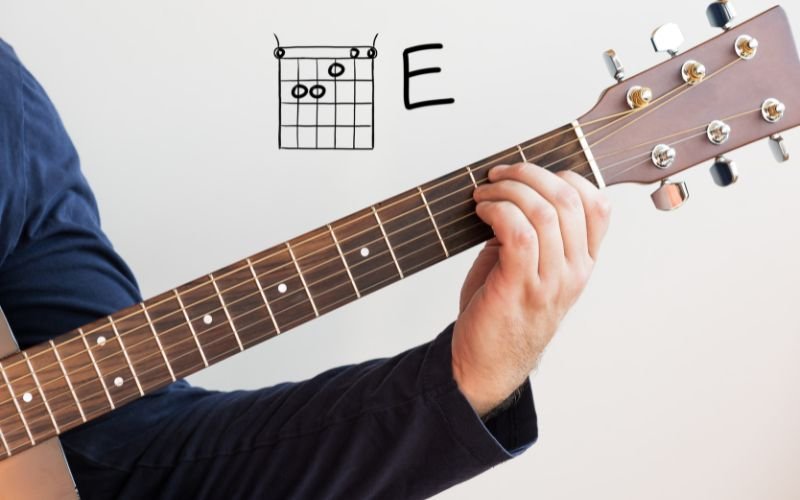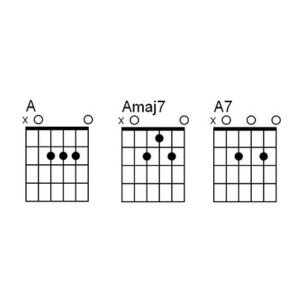Guide: learning to read and play chords simply in music
When you start learning music, one of the first lessons is playing chords. Whether on the piano, guitar or violin, knowing how to read a chord grid is an essential way to play all your favorite pieces of music. Solfeggio, chord progression, rhythmic playing: discover our techniques for learning how to read and play the chord grids on a score or tablature simply and easily!
What is a chord grid in music?
A universal tool for reading and playing the notes of a musical melody
Used to read musical language in all musical styles, from jazz to pop to rock, a chord grid represents a sequence of chords corresponding to a melody or song. A chord grid guides the musician in reading a song or composition. Mastering chord reading requires a good understanding of the theoretical bases of music theory.
While chord grids indicate precisely which chords and rhythms to play, they give musicians the freedom to improvise chord patterns to suit their own musical style and instrument. This can be done by changing the duration of chords or by repeating notes.
How is a chord grid structured?
The chord grid can be written in two different ways: as a succession of squares, or as a chord line (also known as a chord progression). In short, it is the writing of a succession of chords to be played that indicates an overall rhythmic pattern.
The chord grid is usually presented as a series of major or minor chord symbols (such as Cmaj7, Dm7, G7, etc.). This harmony grid can include bar indications, showing in each square when and how long each chord should be played.
Example of a chord grid :
Guitar chord grid :
Why is it important to know how to read a chord and a chord grid?
If you want to play music independently, mastering chord reading and chord charts is essential. Theoretical learning in music courses can be a good way of familiarizing yourself with note reading. This will enable you to explore a vast musical repertoire without relying exclusively on recordings or lessons. By learning to read the language of chords, musicians become autonomous and can then read any grid they wish. Knowing how to read a chord grid is an essential skill for many musicians, especially those embarking on improvisation.
For composers and arrangers, understanding and using chords enables them to create harmonies and record their musical ideas. And because it encourages you to recognize chords by listening, practicing chord grids sharpens your musical ear.
💡 Chord grids also serve as a means of communication between musicians. This allows all members of a band to understand the harmonic structure of a song without needing a full score!
Which chords to learn?
There are several ways of notating chords and notes on a score or chord grid. Each has its own characteristics. The standard notation technique is the most widespread, and involves writing on staves, with notes, clefs, pauses and symbols to indicate pitch, duration, tempo, dynamics and so on. For universal oral and theoretical understanding, you can learn to read the language of solfeggio by note name (C, D, E, etc.) or (C, D, E, etc.).
Grading by note name French version vs. by note name English version :
|
Do |
C |
|---|---|
|
Ré |
D |
| Mi | E |
| Fa | F |
| Soil | G |
| Visit | A |
| If | B |
🎶 In addition to traditional notations, some grids are written using other systems:
tablature (Tab) for stringed instruments,
the numerical notation used for harmonic analysis,
graphic notation with symbols for reading contemporary music,
writing lyrics to accompany chord symbols,
or the digital MIDI language used in electronic music.
Learn to read and play a chord grid, step by step
1. Learn to read the rhythm of a chord progression
The rythm plays a very important role in the structure and expression of music. That's why mastering rythm a chord progression is a basic skill for every musician.
How do I go about it?
To master rythm in music, start by understanding the basic rhythmic values such as quarter notes, eighth notes, sixteenth notes, half notes and round notes, and their associated rests. This will help you understand how rhythms are organized in time according to measure and tempo.
Read the measure indications, which define the number of beats per measure and the note value representing a beat. Counting practice, aloud or silently, with the help of a metronome, is useful for maintaining a constant tempo and understanding the subdivisions of time.
The use of tools such as metronomes, notation software, online tutorials and regular practice are effective ways of improving rhythmic reading and synchronization with other musicians, adapting to variations in rythm and tempo.
Example of an agreement change :
→ 4/4, if the measure has 2 chords, they are played on the 1ᵉʳ and 3ᵉ beat. If the measure has 4 chords, you'll play a chord on each of the 4 beats.
→ 3/4, if the bar has 3 chords, a chord is played on each beat
→ 2/2 or 2/4, if the bar has 2 chords, this means they are played on each beat.
On the same musical track, the ciphering does not change (with a few exceptions). However, from one bar to the next, you may see rapid changes inchord .
💡 For bars accounts, group song playback and synchronization annotationsdon't beat about the bush: let Newzik's application tools be your guide!
2. Playing a song from a chord grid
Playing a tune directly from a chord grid can help you master rhythm and improvisation! Here are a few important things to know before you get started.
A song is divided into several sections: intro, chorus, verse, bridge, etc. To separate sections, notation is marked by a barline (symbolized by 2 dashes) or a line break (with the numbering indicated).
The start of a chord repeat is indicated by small dots to the right of the barline. This is called the "repeat bar". If these two dots are located to the left of the bar, this is the end of the repeat. Annotations such as x2 or x3 indicate the number of times the part is to be repeated.
3. Find the chords of a song
You want to play a song, but you don't have the sheet music or the chord grid. There are two ways to recognize a song's chords!
Recognizing chords by ear
Some professional musicians are able to findchord gridsby ear. However, this may not be the case for you as a beginner. In the meantime, it's a good idea to gain a detailed understanding of how music is constructed by learning music theory.
Search for agreements online
To do this, there's nothing simpler than making an online request by typing into a search engine: "song wanted + chords". Even if you don't get the exact score you're looking for, you'll at least get the chords.
💻 Discover our selection of the best platforms to find your piano scores and guitar tablatures !
Retranscribing a track from an audio file
Do you own a piece of music in one of the following formats? MP3, MIDI, WAV, M4A or MOV? Would you like to play it on your instrument (piano, guitar, violin, etc.)? Some applications let you transform the chords of a song from an audio or video track, or even a YouTube player!
🎶 Looking to transcribe your chord grids so you can quickly share them with your band during rehearsals? Try out the score annotation and transcription functions in the Newzik and record yourself in just a few clicks! Sound on!




